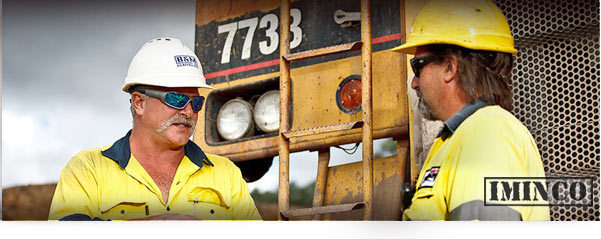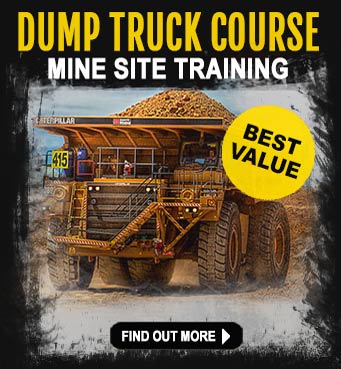 Mining Induction courses have been around for some time, especially in Queensland where the State government have introduced legislation to increase safety in the industry.
Mining Induction courses have been around for some time, especially in Queensland where the State government have introduced legislation to increase safety in the industry.
Yet it seems injury and even mine site fatalities are on the increase. How can the industry prevent injury and loss off life, especially for contractors?
Over the past year, mining activity has leveled out, personnel levels have been thinned as mining companies move from the heavy investment phase into productivity increases in a bid to maximise profits. Increased productivity can also mean the increased possibility for accidents to occur. This is why mining induction courses are so critical for new starters and contractors who stepping onto a mine site for the first time and entering unfamiliar territory.
Mining companies also have their own mining induction course which is more site-specific and deals with familiarising new workers and contractors with the mine site. The site-specific mining induction course has many benefits and highlights the local risks associated with a particular mine.
Could mining induction courses have prevented the recent fatalities on mine sites?
Mining accidents occur when there is a lapse of attention to the surroundings or a failure to comply with safety warnings or ignorance of the dangers in a particular working environment. Danger is ever-present in a mining operation. Seasoned mine workers can often draw on years of experience in the field which can make a huge difference in terms of safety and risk assessment.
Some of the accidents that come to mind over the recent months highlight how a lack of communication and awareness is the main cause of accidents on a mine site. Reports of vehicle collisions, inadequate protection around machinery and underground communications failure highlight the absolute need for more mining induction courses as well as regular refreshers.
In Queensland the Mining Induction Course, recognised Standard 11 is valid for 5 years whereas in WA the requirements for safety induction training are less stringent, which could possibly account for an alarming number of fatalities on the Fortescue Metals Group mine sites in the Pilbara.
Fortescue Metals Group safety record in tatters
Fortescue Metals Group is under fire over the deaths of two of its contractors as well as a host of safety breaches as investigators place the company`s operations under extreme scrutiny. Fortescue
use a wide range of contractors to build and operate its iron ore operations in the Pilbara. This has angered the unions and workers who are worried about Fortescue`s serious incident rate and some of the work practices.
Mineral Resources Limited, was the mining services company which was employed by Fortescue has a worker lose his life whilst carrying out maintenance on a crushing plant. Another man was involved in a fatal accident in a machine shop at the Christmas Creek mine. He was also employed by a contractor Global Surface Mining.
Other accidents at Fortescue Metals mine sites involved a truck crash where a driver lost a leg, as well as a serious ‘near-miss’ when 3 people where discovered in a blast exclusion zone and incidents involving mine site vehicles with 2 water trucks under the spotlight.
The department`s executive director of mine safety Simon Ridge said, “Fortescue`s mine sites appeared to have involved an “ineffectual isolation and lock out/tag out processes”�.
A Department of Mines and Petroleum spokesperson says more than 500 workers per year suffer serious injuries on WA mines.
For people who are looking to the mines as an attractive career opportunity and a chance to make some serious money – thought should be given to their personal safety and education. Mining induction courses across Australia can vary from state to state.
With Queensland and New South Wales being one of the main mining hotspots outside of WA, it’s critical that new mine workers, tradespeople looking to move across into mining and even current workers, to consider their safety training options.
Mining Induction can sometimes be viewed as a waste of time and money by a minority of people who view safety as a low priority. They seem hell-bent on voicing their opinions that training is not needed and it is too expensive. That’s all very well – try telling that to the families who lost a loved on over the past year – could that accident have be avoided? We think so.
No matter what industry you are in, be it mining or civil construction and engineering, the attitude of safety first should always be “top of mind”.
Mining Induction explained
Mining jobs can be dangerous, so you need training in risk assessment and hazard management, not only to protect yourself, but to protect the lives people you will be working with.
Do you know what a SLAM is, or perhaps LTI, or JSEA? Are you up to date with WH&S? Have you ever completed a safety induction training course before? Do you know what causes the most accidents in the mining industry?
If not “� then you might want to consider taking this 2 day Mining Induction course.
What you’ll learn:
- Safety Compliance
- Mining Terminology
- WH&S Compliance
- Hazard Management
- Risk Management
- Record Keeping
- Emergency Procedures
- Fire Fighting
- Radio Communication.. and more
Don’t be another statistic. Be safe and invest in your own safety – your family will be glad you enrolled in the Mining Induction course.
- Find out more about the Mining Induction course.
- Find out more about the Mining Induction Refresher course.

